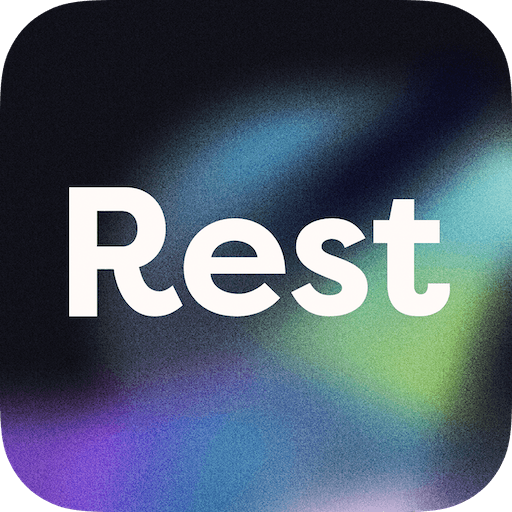CBT-i
Menopause
Jul 3, 2025
At Rest, we are committed to helping you at every stage in your life. If you're going through menopause and finding yourself wide awake at 3 AM, you're not alone. Up to 60 % of menopausal women experience significant sleep disruption, making it one of the most common and frustrating symptoms of this life transition. But what's really happening in your body that's stealing your sleep? Let's dive into the science and—more importantly—what you can do about it.
FAQ: How do declining estrogen levels specifically affect sleep architecture?
When estrogen levels drop during menopause, your brain's sleep‑control centers undergo dramatic changes. Estrogen receptors densely populate key sleep‑regulating nuclei, including the hypothalamus, where they modulate both circadian rhythms and sleep architecture.
Here's what happens to your sleep stages:
Sleep spindles change: Hormonal fluctuations reshape sigma activity. A recent conference abstract showed that spindle‑band power varies across the menstrual cycle and is blunted after menopause. This may explain why many women report "brain fog" during menopause.
REM sleep gets disrupted: Estrogen normally influences serotonin pathways that control REM timing and density. Without adequate estrogen, REM periods become shorter and more fragmented.
Deep‑sleep paradox: Polysomnography from the Wisconsin Sleep Cohort reveals that post‑menopausal women show increased slow‑wave sleep yet more arousals, so you may technically hit deep sleep—but it's constantly interrupted.
The loss of progesterone compounds these effects. Its metabolite, allopregnanolone, is a potent GABA‑A receptor modulator with roughly ten‑fold the potency of benzodiazepines—confirmed by pharmacologic binding studies. When you lose this natural sedative, sleep becomes more elusive.
FAQ: What's the difference between menopausal insomnia and regular insomnia?
The key difference: Menopausal insomnia centers on sleep maintenance rather than initiation—you fall asleep fine but wake up repeatedly.
Unique patterns include:
Higher follicle‑stimulating hormone (FSH) correlates with longer wake‑after‑sleep‑onset and more arousals; FSH begins to rise about six years before the final menstrual period and ultimately climbs up to 14‑fold.
Women experiencing ≥ 6 hot flashes per fortnight have 2–3 × higher odds of any sleep disturbance.
Post‑menopausal women face a 2–3 × higher risk of sleep apnea.
Numbers tell the story: Menopausal insomnia patients average 84 min of wake time vs 63 min in matched controls, with sleep efficiency dropping to 82 %.
FAQ: Can CBT‑i work for hormone‑related sleep issues?
Absolutely. Cognitive Behavioral Therapy for Insomnia (CBT‑i) is highly effective for menopausal sleep problems, often outperforming sleep medications long‑term. A 2024 scoping review found that CBT‑i improves sleep efficiency by ~10 % and cuts wake‑after‑sleep‑onset by ~31 min.
A landmark MsFLASH randomized trial showed that telephone‑based CBT‑i produced clinically meaningful gains that persisted for 24 weeks. Formats ranging from in‑person to app‑based delivery perform similarly, so evidence‑based programs like the Rest App let you implement CBT‑i at home.
FAQ: Why do hot flashes specifically wake me up at night?
Your internal thermostat narrows: The brain's thermoneutral zone shrinks from about 0.4 °C to nearly zero during hot‑flash susceptibility, so tiny 0.1 °C shifts can trigger a full flash.
Timing matters: A polysomnographic analysis of 165 nocturnal hot flashes found that 51 % occurred during wakefulness and 18.8 % during N1, with 80 % occurring just before or during an awakening.
Cumulative burden: Each additional flash tacks on roughly 6.3 min of extra wake time, accounting for almost 27 % of total nocturnal wakefulness.
FAQ: How does FSH elevation contribute to sleep problems?
FSH isn't just a marker—it actively disrupts sleep. Serum levels jump from <25 IU/L pre‑menopause to 25.8–134.8 IU/L post‑menopause, a 14‑fold rise documented in a 2024 neuroscience review on FSH biology (doi:10.1016/j.pscychresns.2024.111631; ScienceDirect link above). FSH receptors on immune cells promote pro‑inflammatory cytokines such as IL‑6 and TNF‑α, which fragment sleep.
FAQ: What happens to my circadian rhythm during menopause?
Cortisol rhythm disruption: The Seattle Midlife Women's Health Study showed that the normal midnight cortisol dip often disappears—levels stay elevated 27 % longer creating a “non‑dipping” profile.
Brain hyper‑arousal: Quantitative EEG from the SWAN Sleep Study found increased high‑frequency beta power during sleep in late peri‑ and post‑menopause, indicating that parts of your brain remain on alert even while you sleep.
FAQ: When during menopause are sleep problems typically worst?
Large‑scale data from the SWAN cohort demonstrate that sleep‑problem prevalence peaks at 45.4 % in late perimenopause. Roughly one‑third of women maintain good sleep, while about 14 % experience persistently poor sleep.
Risk factors for chronic insomnia include depression/anxiety (OR ≈ 9.7) and objectively short sleep (OR ≈ 3.2).
FAQ: What are the latest breakthroughs in treating menopausal sleep problems?
Brain‑imaging discoveries: Weill Cornell imaging studies reveal temporary structural changes during menopause but impressive recovery post‑transition.
Digital solutions: Rest integrates CBT‑i principles in its program, supported by AI-enabled personalization to meet your specific challenges.
Precision medicine: Emerging work links DNA methylation of estrogen‑receptor genes (ESR1, GPER) to sleep‑disturbance risk, opening doors to early, tailored interventions.
The Bottom Line
Menopausal sleep disruption is multifactorial—hormones, temperature control, and brain arousal all play a role. The good news? Evidence‑backed tools exist. You can reclaim restorative sleep from CBT‑i in-person programs to digital coaching platforms like Rest during this transition.

